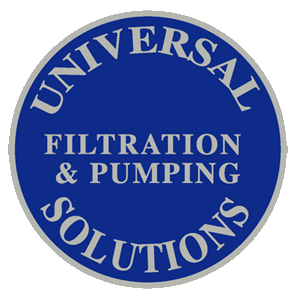Capillary Suction Timer Test Procedure
Introduction
The Capillary Suction Timer Test, more commonly called the CST test, is used to determine the polymer dose range for good sludge filterability. Since polymers have a wide range of characteristics including charge type, charge density, molecular weight, and differences in chemical behavior, it is normal to test a variety of polymers to determine the most suitable ones for filter press pilot testing. The CST test does not predict filter press performance.
Description of Equipment and Outline of Test
The CST unit consists of timer, paper holder, contact ring, and sample cylinder. A special heavy paper is used. The test basically measures the time the liquid front takes to move between two sets of contacts. The liquid must have a degree of conductivity from dissolved ions for the electrical circuit to be completed. Tap water has a CST time of about 8 – 9 seconds while raw sludges have CST times sometimes in excess of 500 seconds. Thus the closer the CST time for the conditioned sludge is to that of water the better the conditioned sludge releases water and the more filterable the sludge is.
Chemicals
Polymer samples from various manufacturers.
Polymers are available in four forms: dry, emulsion, liquid, and mannich. Almost always only dry, emulsion, and liquid polymers will be evaluated.
Polymer are normally used in solutions of about 0.10 – 0.25% concentration. The manufacturer’s instructions for making up the solution and for proper aging of the polymer solution should be followed.
Detailed Procedure
- Make up and properly age each polymer solution per the manufacturer’s instructions.
- Obtain a 5 – 10 gal representative sample of the sludge to be tested
- Determine the feed solids and pH of the sludge. If a laboratory sample is needed collect a 1 liter sample for analysis
- If necessary adjust the pH to be the range of 6 – 8 unless the polymer to be tested is know to work at the sludge pH. Most polymers work very well at essentially a neutral pH.
- Using a 250 ml sample add the polymer per Table 1 and mix well to insure floc formation.
Table 1. Recommended Polymer Dosages for CST Testing
| Polymer Run | Dose Lbs/ton of dry sludge solids |
| 1 | 5 |
| 2 | 8 |
| 3 | 10 |
| 4 | 12 |
| 5 | 15 |
- Pour a small sample of the conditioned sludge in the sample holder and wait until the CST has finished. Record the time.
- If the CST time is less than 30 seconds, repeat the run twice more.
- Repeat steps 4 through 7 for each polymer.
- If none of the polymers is satisfactory raise or lower the polymer dose based on the data collected.
Calculations
None
Interpretation
One issue with polymers is the stability and strength of the floc. This is usually evaluated by vigorous mixing of the conditioned sample for about 2 minutes and observing the resulting floc. The less the floc visually changes the stronger and more stable the floc and the more likely a good filter cake can be made in a filter press.
Generally if the CST times are less than 30 seconds the sludge filterability has improved enough that a decent cake will form in a filter press. If the CST times are less than 20 seconds the filterability has improved sufficiently for a good cake to form in a filter press. The CST times will normally show the effective polymer dose range.
